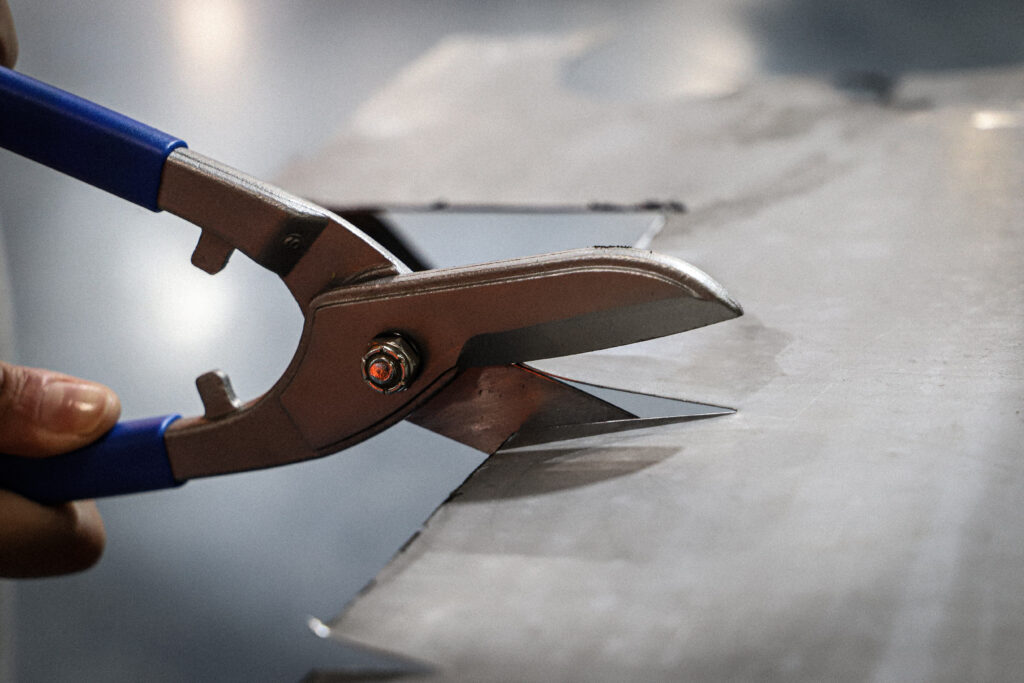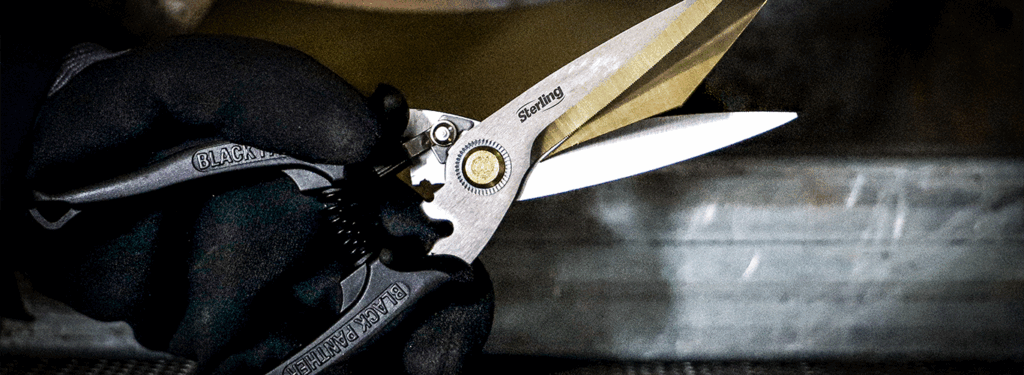Cutting and snipping with the wrong tool can be frustrating, resulting in jagged edges, sore hands and a finished product that looks rough. If you’re a tradie on the tools daily or working on weekend projects, having the right pair of snips can make a big difference.
So, tin snips, aviation snips or industrial snips? They all have their place in specific scenarios, but understanding their differences is the key to getting the job done right.
Key comparisons:
Discover the Range
What are tin snips?
Tin snips are the original style of snip, trusted by tradespeople for a long time. Known for their robust, no-nonsense construction, tin snips are often heavier, more durable, and capable of being resharpened, making them a long-lasting addition to any tradies toolkit.
While they may lack the ergonomic features and spring-loaded mechanisms found in other snips, tin snips make up for it with raw cutting power and reliability. When used correctly, they can produce extremely accurate and clean cuts, even on tougher materials. However, mastering them takes skill and experience; they’re not designed for the casual user or weekend DIYer.
These tools are typically built with a cutting capacity that far exceeds the physical strength of the average user, meaning they’re best suited for trades who know how to apply leverage and technique.

These snips are affordable, widely available at most hardware stores and easy to use for light-duty tasks. Generally regarded as an old school way of snipping, the straightforward design means they’re good for odd jobs and occasional use, such as trimming, flashing and cutting mesh or plastic sheeting.
Limitations of tin snips:
Tin snips do come with some trade-offs.
Traditionally, tin snips do not include a spring-loaded mechanism, meaning all cutting force comes from your grip strength which can lead to hand fatigue during repetitive cutting. The thick blades also reduce precision and limit the ability to cut through tough materials.
What are aviation snips?
Developed for the aviation industry, aviation snips were designed to cut through aircraft-grade materials. Now, they are widely used across various trades and have become a go-to snip for many pros and DIYers.

One of their features is the compound leverage mechanism, which consists of multiple joints and pivots, meaning that a small force applied to the handles can generate a large force at the cutting blade. They are paired with a spring-loaded handle that reduces the force needed with each cut, making them ergonomic and user-friendly.
The spring-loaded action also automatically reopens the handles after each cut, helping to reduce hand fatigue significantly.
Aviation snips are available in three common cutting types:
- Left-cut (usually red handles): For cutting curves to the left.
- Right-cut (usually green handles): For cutting curves to the right.
- Straight-cut (usually yellow handles): For straight lines and slight curves.
They are ideal for cutting soft sheet metals like aluminium, copper and vinyl, but they can also handle mild steel and even thin stainless steel, giving them a big edge over basic tin snips.
Left and right aviation snips serve specific purposes and aren’t directly comparable to straight industrial or tin snips. This distinction should be kept in mind when making comparisons.
Limitations of aviation snips:
Despite their versatility, aviation snips aren’t perfect for every job.
Aviation snips can struggle with long, straight cuts as the jaw mechanics make maintaining a perfectly straight line difficult over extended distances. They are also not built for heavy industrial cutting tasks or super thick materials.
Additionally, each tool type (left, right, straight) is typically optimised for a specific cut, there is not a one type fits all.
What are industrial snips?
Industrial snips are like tin snips, aviation snips, secateurs, and a knife, all rolled up into one ultimate cutting tool.
Perfect for frequent and demanding use in professional trade and industrial settings like fabricators, HVAC, roofing, electrical, carpentry, plumbing and more. But don’t count out DIYers, gardeners, chefs, fishers, hobbyists and the list goes on, these snips are ideal for just about anyone.
These snips exceed what tin or aviation snips can handle, offering greater strength, cutting capacity, and durability. Industrial snips are built to withstand tough materials, high workloads and rough environments.

Often made with sharp serrated steel blades and reinforced handles, these tools are built for strength. The solid construction of the blade that continues through the handle allows them to cut through hundreds of materials with ease.
Along with strength comes an ergonomic design with spring-loaded handles, padded grips and locking mechanisms to help reduce fatigue and improve control during repetitive cutting.
Limitations of industrial snips:
The industrial snip has very minor limitations. While it is slightly more expensive than aviation or tin snips, it may also be a bit excessive for occasional light-duty tasks.
However, it gets the job done, and it’s better to have a snip that can handle everything than one that falls short.
Sterling Black Panther Industrial Snips:
Take the Sterling Black Panther Industrial Snips, for example, they aren’t just sharp- they are relentless. Built for the grind of real-world trades and beyond, they cut through just about everything with sharp, precise, long-lasting cutting.

Some key features include:
- Engineered with high-quality Japanese stainless-steel blades that produce a sharp edge and have corrosion resistance.
- Stainless steel blades that run the complete length of the handle for unparalleled strength and durability.
- Serrated edges so you can grip objects, making them easier to cut.
- A locking clasp with a comfortable grip so it’s easy and safe to use
- A spring-loaded mechanism that provides easy, smooth cuts helps the blades return to the open position, reduces hand fatigue, and makes repetitive cutting stress-free.
The Sterling Black Panther Industrial Snips are incredibly versatile—so much so that we wrote 105 Things Black Panther Industrial Snips Can Cut.
Looking to get one for yourself or a mate? Check out our store locator below!
Store locator:
Store locator is loading from StoreRocket Store Locator App..